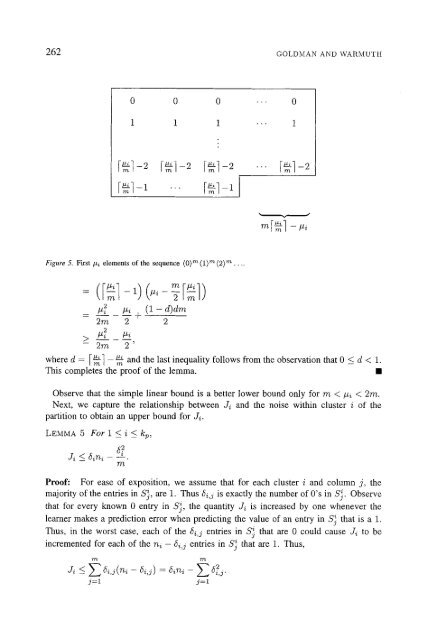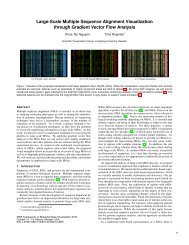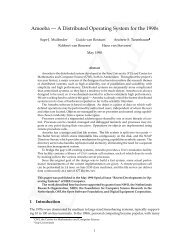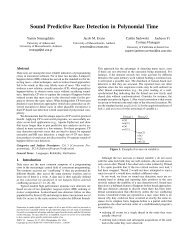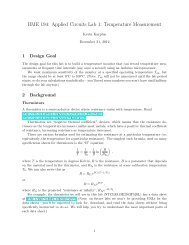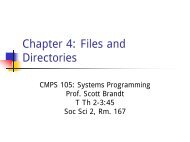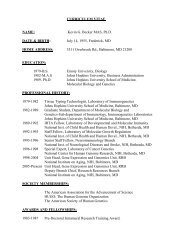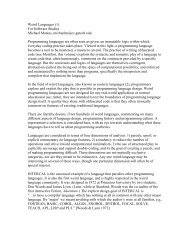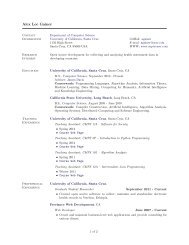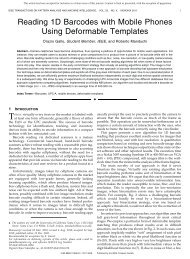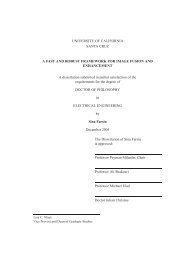Learning binary relations using weighted majority voting
Learning binary relations using weighted majority voting
Learning binary relations using weighted majority voting
Create successful ePaper yourself
Turn your PDF publications into a flip-book with our unique Google optimized e-Paper software.
262 GOLDMAN AND WARMUTH<br />
0 0 0 -.. 0<br />
1 1 1 --- 1<br />
[~I-I ... [~I-1 I<br />
Figure 5. FirSt/zi elements of the sequence (0) m {1) m (2) m ....<br />
= ([--~1- 1)(#i- 2[--~] )<br />
P~ #4 (1 - d)dm<br />
- +<br />
2m 2 2<br />
> #2 #i<br />
- 2m 2'<br />
[ 1-2 .-- [ 1-2<br />
• t<br />
where d = I~] - ~m and the last inequality follows from the observation that 0 _< d < 1.<br />
This completes the proof of the lemma. •<br />
Observe that the simple linear bound is a better lower bound only for m < #i < 2m.<br />
Next, we capture the <strong>relations</strong>hip between Ji and the noise within cluster i of the<br />
partition to obtain an upper bound for Ji.<br />
LEMMA 5 For 1 < i < kp,<br />
Ji < 6~ni 52<br />
770,"<br />
Proof: For ease of exposition, we assume that for each cluster i and column j, the<br />
<strong>majority</strong> of the entries in S~, are 1. Thus 6~,j is exactly the number of 0's in Sj. Observe<br />
that for every known 0 entry in @, the quantity Ji is increased by one whenever the<br />
learner makes a prediction error when predicting the value of an entry in S} that is a 1.<br />
Thus, in the worst case, each of the 6i,j entries in S~ that are 0 could cause Ji to be<br />
incremented for each of the n~ - 5i,j entries in S~ that are 1. Thus,<br />
J~ < E 6i,i (ni - ~i,i) = 6ini - 5?<br />
-- 7.,, 3 •<br />
j=l j=l


